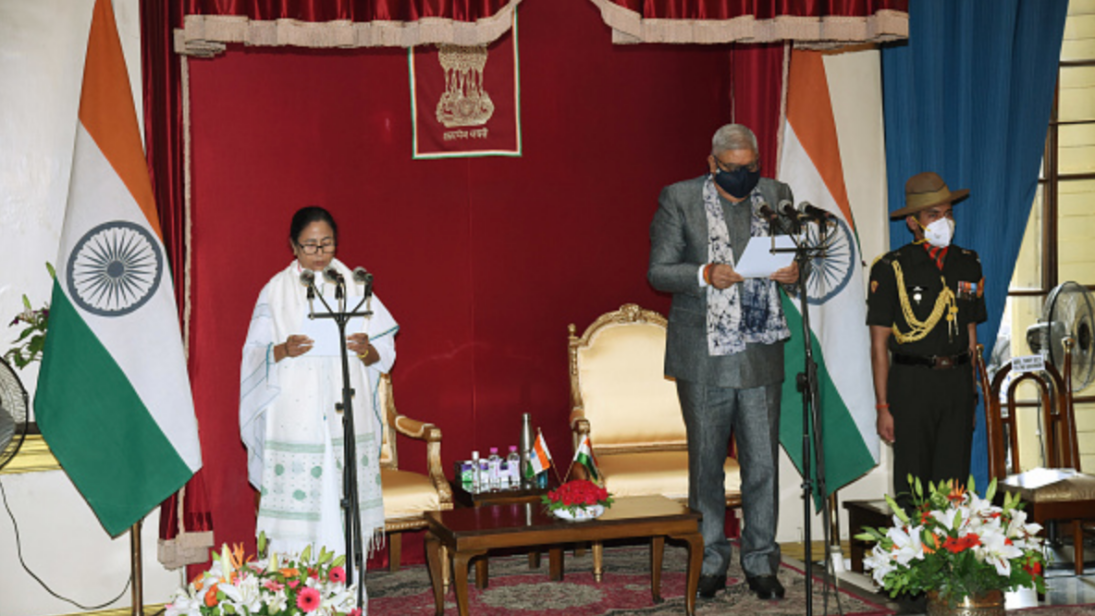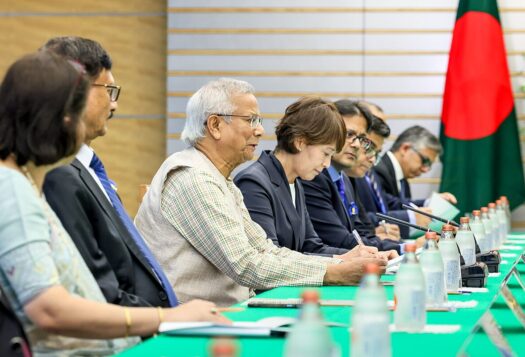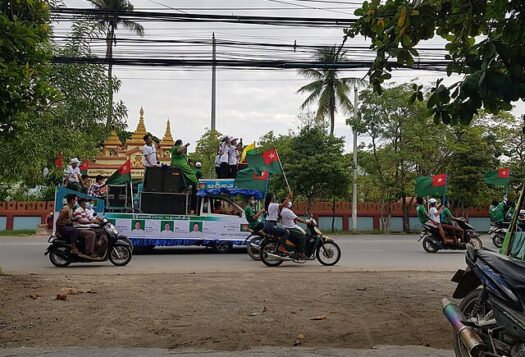
The All-India Trinamool Congress (AITC) made headlines in India when twelve out of seventeen Members of the Indian Legislative Assembly (MLAs) from the Indian National Congress (INC) in the northeast state Meghalaya defected to the AITC and the party emerged as Meghalaya’s largest opposition party. This came on the heels of multiple MLAs and Members of Parliament (MPs) quitting their respective parties and joining the AITC. While the AITC is a regional party present in the Indian state of West Bengal, MPs in other Indian states joining the party indicate its national appeal. Some have suggested the AITC could replace the INC as the principal opposition party in India. This decisive shift came after the AITC’s victory in the regional elections in 2021 that saw the AITC supremo Mamata Banerjee cement her position as a regional kshatrap (leader) in Indian politics who could also challenge the central government led by the Bharatiya Janata Party (BJP).
The AITC’s rise cannot be equated with the downfall of the INC, the principal center-left political party that led India’s independence movement. Nation-wide defections do, however, reflect a prolonged period of political vacuum in India’s politics. The systematic decline of the INC as a political entity over the last decade has led India’s smaller, regional parties to gain momentum beyond their initial regional contexts. While this has afforded the AITC an opportunity to lead the opposition, it must first consolidate its presence in key Indian states with political leverage like Uttar Pradesh as it sends several members to the Indian Legislature. Similarly, the AITC must build political alliances with regional political parties like the Aam Aadmi Party (AAP) in North India to consolidate its position as a national political party.
Decline of the Indian National Congress
While the INC led India to independence and remained in power for successive decades—barring a few brief interludes, especially after the 1975-1977 Emergency—the 1990s decisively altered political dynamics for Congress. At that time, political entities like the socialist Samajwadi Party promising to represent different castes—especially the Other Backward Castes (OBCs)—emerged in India. The demolition of the Babri Masjid and the ensuing politics surrounding the construction of the temple strengthened the BJP’s political clout.
The AITC must build political alliances with regional political parties like the Aam Aadmi Party (AAP) in North India to consolidate its position as a national political party.
The INC regained political fortunes in 2004 after winning the Indian General Elections and it retained power for the following decade. By the early 2010s, however, corruption charges leveled against the INC-led government, a weakening economy, and the unpopularity of the Gandhi family—that had led the party for years—enabled the rise of the BJP under the leadership of Prime Minister Narendra Modi. Voters viewed Modi as an able administrator due to his perceived success as the Chief Minister of Gujarat—a state that saw significant industrialization during his tenure. Modi’s charisma juxtaposed INC candidate Rahul Gandhi’s woodenness. Gandhi was seen as incompetent, lacking leadership experience, and a dynasty candidate, all furthering support for Modi during the 2014 Indian General Elections.
The rise of the BJP, however, was accompanied by the systematic weakening of opposition parties. The BJP won power in key states by consolidating its Hindutva agenda, expanding messaging to include OBCs and religious minority communities, leaving them politically vulnerable. The BJP has only further sidelined non-Hindus, for parties like the AITC to establish themselves at the national stage while representing the interests of the marginalized.
Rise of Mamta Banerjee & AITC
The AITC is a grassroots party that believes in the holistic development of the nation and seeks represents the interest of all communities including the minorities. The party advocates a liberal ideology that makes it a viable counter for the BJP at a time when the government is propagating divisiveness in India.
A political force to reckon with, AITC supremo Mamata Banerjee’s home state of West Bengal sends 42 MPs to the Lower House of Parliament, the Lok Sabha. That is third-most after Uttar Pradesh and Maharashtra. She is a secular politician who does not differentiate among her voters on the basis of religion and caste, and this places her in direct opposition to the overtly majoritarian BJP.
As women voters have been perceived as a niche vote bank in Indian politics and political vilification has left minority women vulnerable, Mamata Banerjee can pitch herself as a woman leader who represents their interests. She is the only sitting woman Chief Minister in India today and has already acquired a loyal following among women voters in West Bengal due to the success of her popular social schemes.
Overtly critical of the INC for being unresponsive towards the needs of the present voters, Banerjee has projected the AITC as the true inheritor of the INC’s legacy of INC—as a party that is “socially just,” governs the electorate using a “service delivery model,” and focuses on inclusive welfare schemes targeting women. Industrial Development is another pivot of her governance model that aims to attract capital investment, such that big ticket entrepreneurial ventures can find a footing in West Bengal. If voted to power at the national level, she is expected to replicate the same governance model and defend cooperative federalism while providing greater decision-making authority to regional parties vis-à-vis the central government. Her conciliatory approach towards state governments could win her allies as state governments have sparred on key issues like taxation and resource allocation for years deteriorating the quasi-federal structure of the Indian polity.
Banerjee has projected the AITC as as a party that is “socially just,” governs the electorate using a “service delivery model,” and focuses on inclusive welfare schemes targeting women.
Finally, the AITC has increased its visibility by wooing supporters in states like Goa, Manipur and other Indian states and Banerjee’s campaigns have won her praise. A Hindi newspaper even asserted that Bangal ki Beti (Bengal’s daughter) has the potential to become Bharat ki Beti (India’s daughter), in an overt reference to her national ambitions.
AITC’s Limited Presence at National Level
Still, given the AITC’s regional founding, it is unclear whether efforts to court other regional parties will translate into an electoral mandate for Banerjee’s political party beyond West Bengal.
The AITC does not currently have adequate bandwidth to influence political decision making at the national level due to its minimal presence in North India, including states like Uttar Pradesh, Rajasthan and Gujarat. These states, collectively, send more than 120 Members of Parliament (MPs) to the Lok Sabha. The AITC should aim to ally itself with the Arvind Kejriwal-led AAP to establish a foothold in states like Uttar Pradesh and Uttarakhand where the AAP can counter the BJP by focusing on its development initiatives within the realm of education and healthcare. This is likely a more effective strategy than engaging in ideological warfare with the BJP. Similarly, the AITC can negotiate with the INC and regional parties like the Samajwadi Party to build an enduring alliance at the national level and garner public support in the Hindi heartland states.
The AITC can, in the immediate term, strengthen its position as a political player in the eastern and Northeastern states of India. It can only consolidate its political standing by winning consecutive elections in these states. The Northeast—which has been traditionally sidelined as a political force in Indian politics—may find a political anchor in Mamata Banerjee. The seven Northeastern sister states, partnered with ally West Bengal, may in turn build a greater stake in national politics in the process.
***
Click here to read this article in Urdu.


